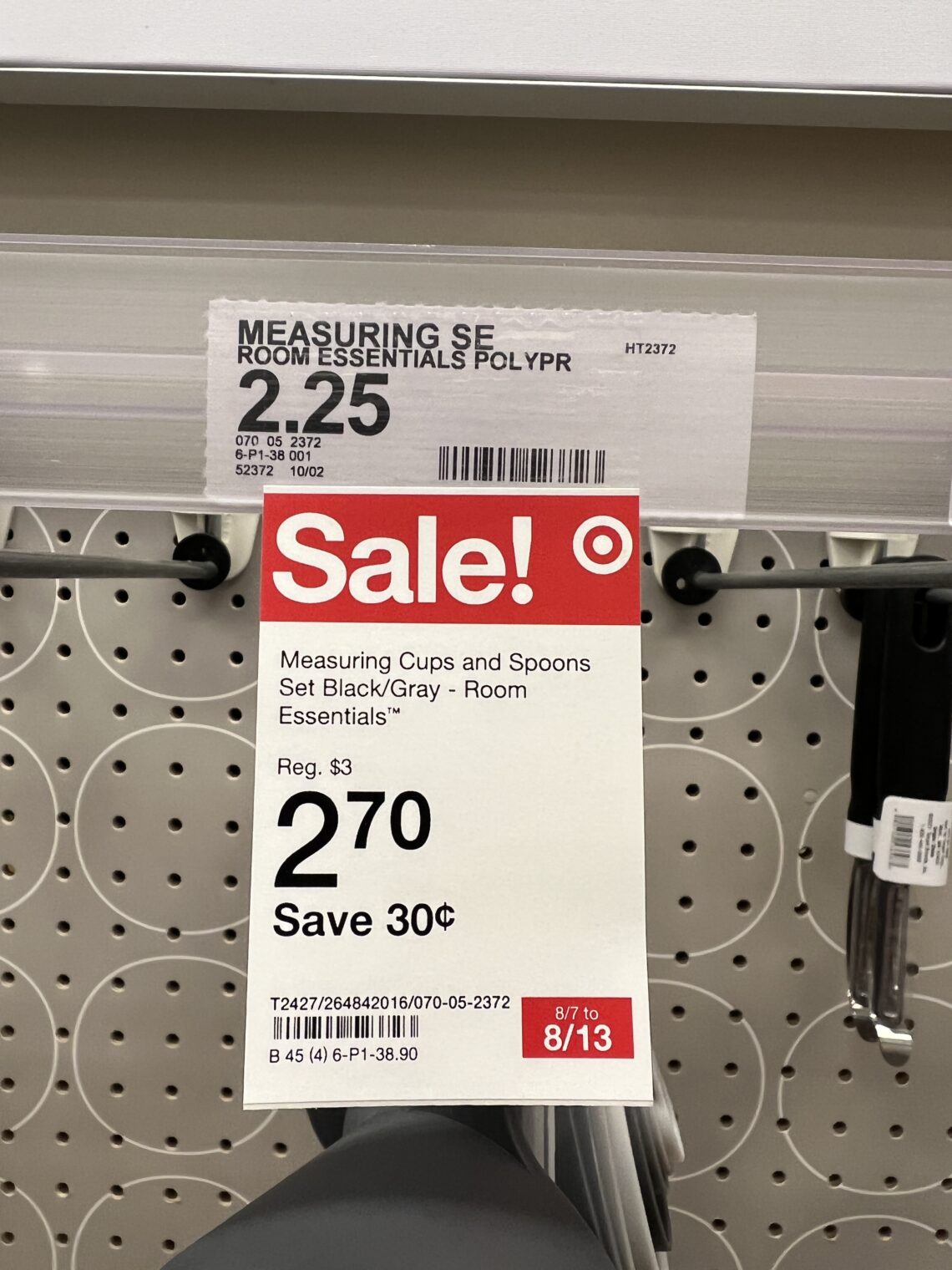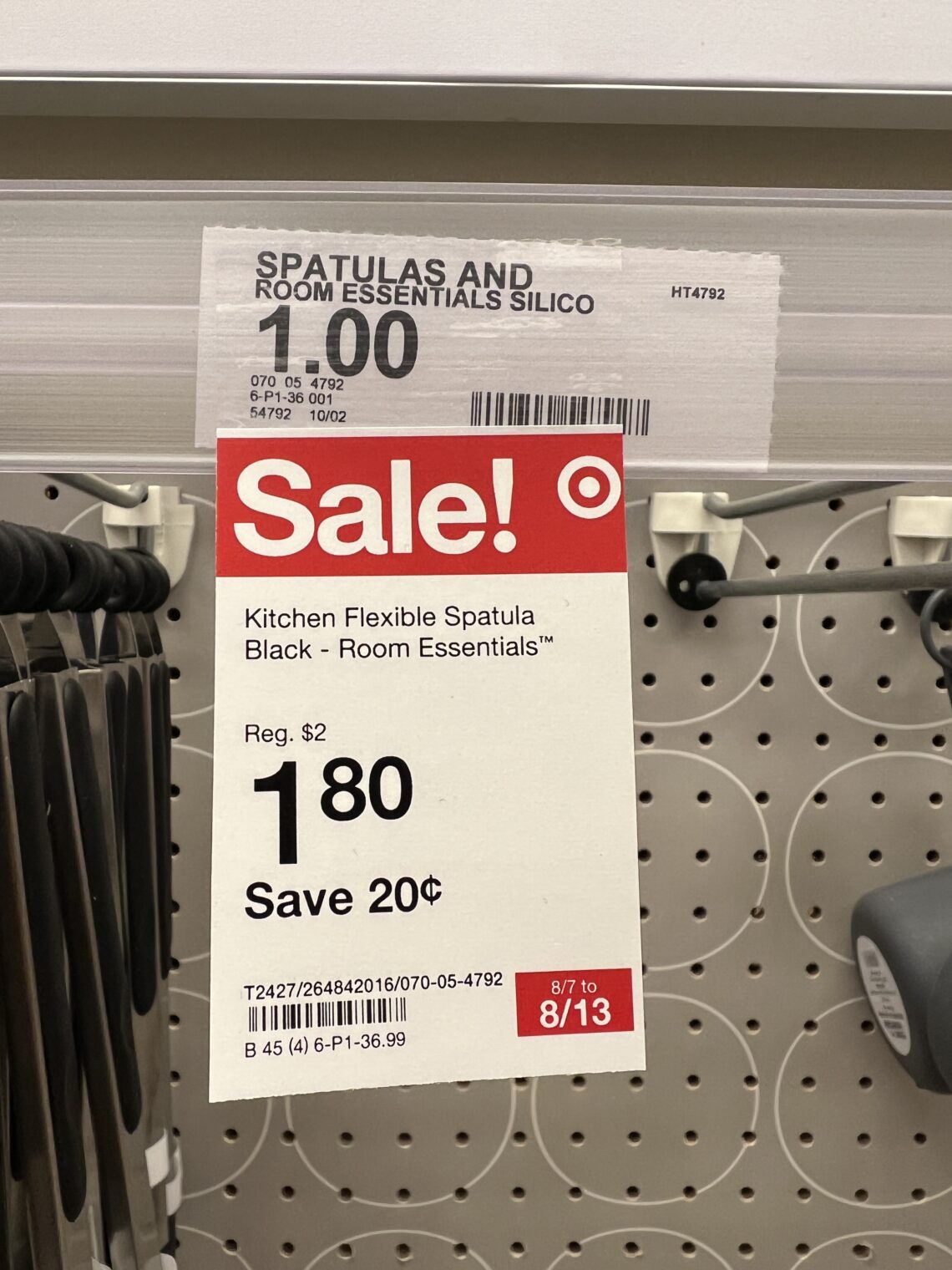The latest CPI numbers are out today. What’s the correct level of panic?
Here are a couple of mid-August pictures from Target:


Prices were going up to fast that the “Sale!” numbers are actually higher than the regular prices, listed above (it isn’t a positional error; the SKUs match).
“U.S. Inflation Eased to 8.3% in August” (WSJ, today) headlines what seems like an irrelevant number in a world where half-trillion-dollar government spending programs may be announced at any moment (e.g., Joe Biden’s transfer of student loan debt from the laptop class to the working class, funding housing, health care, food, etc. for millions of additional migrants, ). Is the price increase compared to a year ago informative regarding what to expect next month? If we dig into the article we can learn a bit about what is happening now:
On a monthly basis, the CPI increased 0.1% in August from July, despite a sharp decline in gasoline prices. The core CPI rose 0.6% in August–double July’s pace.
The best estimate of current inflation, then, is 7.4% annually (the 0.6% core number, fed into the Google as 1.006^12). But it could also be only 1.2% (based on the 0.1% month-to-month number).
80% spatula inflation, looks like in few months at most. We need to correct inflation index by removing spatulas from it! For what I know the inflation statistic is a set of randomized numbers from an Excel spreadsheet of a summer intern.
BLS employees, although I have long thought the “market basket” they use as a reference point is heavily skewed toward what Americans should avoid eating, e.g., Hot Pockets, sodium-laden chips & dips and other unhealthful choices. https://www.wsj.com/livecoverage/stock-market-today-inflation-05-11-2022/card/the-government-workers-behind-the-cpi-h2I8N3UHgKpiWOtYicgq
@Susan Goode, since I buy party food for outings every few month, natural potato hips price skyrocketed as well. Not sure what mystic 8% CPI is based on. Probably on 8086 microprocessor cost in 2022.
yes, a 1976 vintage microprocessor for sale on eBay or on display at Smithsonian’s Museum of American History sounds about right. Or perhaps children’s clothing at thrift shops as there’s a glut of that and a few other select categories
When a store compares a sale price to a regular price, the regular price is supposed to be the price at which products were actually sold, before the sale.
@Roger, we all know that most of sales are really marketing gimmicks and they reflect real dale price. Real comparison here is between new Sale red tag price and price of what looks like a couple week old price tags above the hanging board on isle cover which is a little out of focus.
I’ve seen this tactic at a number of stores ostensibly to cover price increases- they’ll put the items “On Sale” at a price higher than the old regular price; so you get two price increases- one to the sale price, and then to the new even higher regular price once the sale is done. I guess they figure two smaller price increases are more palatable than one big one. But they all end up the same in the end.
They could be prosecuted for false advertising.
@Roger, yes, involving lawyers and legal process into everyday grocery purchases is know to lower prices.
Follow the work of Shadow Stats. Throughout the decades the government has monkeyed around with how CPI is calculated and excluded items that many contend were legitimate to be included. The website recreates CPI calculations using the older and original 1980s calculation methodology.
Using the 1980s approach CPI is well north of 15%.
http://www.shadowstats.com/alternate_data/inflation-charts
Unlikely— treasuries in the early 80s yielded 15-16%. Today the same treasuries yield about 3.5%. The market is willing to lend to Uncle for ten years at 3.5 % when inflation is running 15%? I don’t think so — but if you do, rather than giving free advice here, take a big short position in treasuries. Maybe the treasury market doesn’t know about that website you note.
Ricky: Are you sure that a nominal yield of 3.5% (about +40% over 10 years) is inconsistent with inflation, calculated under the old rules, running at 5% for 20 years and then coming up sharply recently? Plenty of investors have been willing to purchase bonds that are guaranteed to have a negative yield. They considered them, at the time, to be the best available investment. If you look at university endowments, the ones that stuck with the conventional 1950s wisdom of investing in bonds ended up shrinking relative to the endowments of universities that preferred the stock market. Nothing says that a bond’s real yield must be positive.
https://www.thebalancemoney.com/why-are-tips-yields-negative-416876 says “On July 17, 2012, the 5-year TIPS had a yield of -1.21%, the 10-year stood at -0.64%, and the 20-year at -0.01%. Only the 30-year had a positive yield of 0.37%.”
@Ricky, treasuries yield is not an indicator of inflation but indicator of Federal Reserve – set prime rate. So if someone in the money it is not indicator of the value of the money. It just looks green on balance sheet.
What you don’t see much talk about about is wholesale “in-trade” inflation which, for one of the large suppliers in my business, was 16.9% year over year on the same jobs in the same quantity, same materials, same specs. Same, Same, Same in other words and a 16.9% tariff, twice the widely “known” number. You pass that on to the customer in the invoice and get a phone call: “Whoa! 17% more for the same job? Why?”
What about i-bonds? I’ve heard good things. Anyone have an opinion? I’m considering buying some for each family member to max out in the limits:
https://www.forbes.com/advisor/investing/what-are-i-bonds/